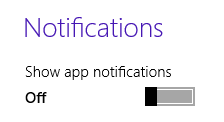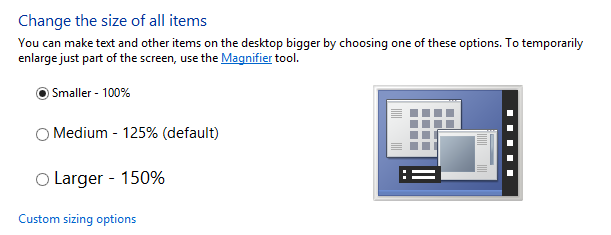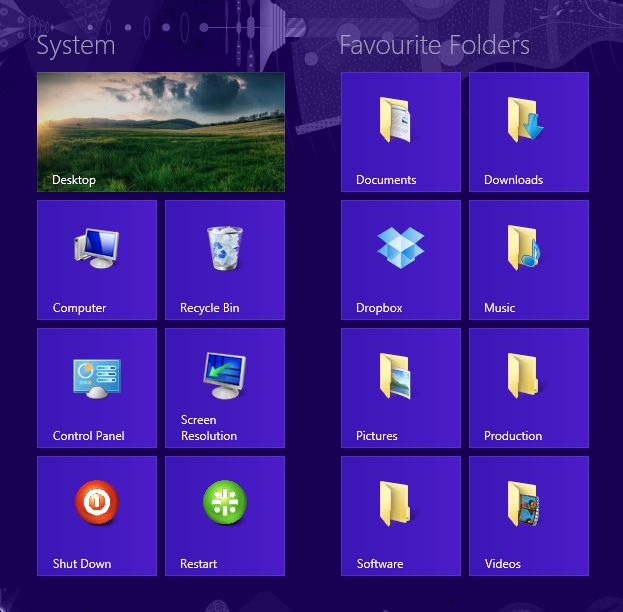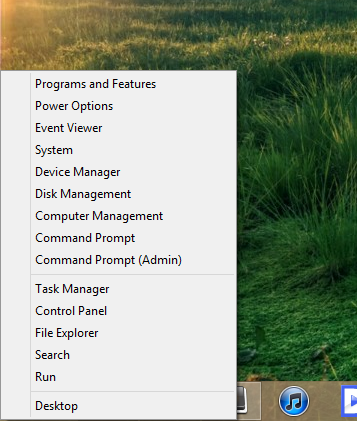Well, it’s almost here folks! Windows 8 arrives this Friday and many people are nervous. I was too the first time I used it; in fact, I hated it! But things have changed significantly for me now. I’m currently running Windows 8 Pro RTM (via MSDN) as my main OS and couldn’t be happier. I’d go as far as to say that I couldn’t see myself going back to or missing Windows 7 in the future at all.
The biggest issue for most people will be the omission of the traditional Start menu and the addition of a completely new and somewhat oddly fitted Modern UI which only really makes sense on a tablet. Even so, I highly suggest that you try working with the new UI as I will outline below before looking at Start menu add-on software (which we’ll touch on too).
What are These Tablet Apps Doing on my Desktop?
That’s a really good question, and it’s really obvious that Microsoft are force-feeding everyone these apps. Default file associations push you over to Modern UI apps and you are booted into the Modern UI without any currently known built-in method of disabling this.
I will be the first to say that I dislike Modern UI apps on a desktop computer. Multitasking is severely impaired, the workflow is far too different from traditional applications and the mouse gestures suck.
Removing the Modern UI Apps
Right click on each application and click on Uninstall. Be sure you’ve uninstall everything by hitting Ctrl + Tab to view the Apps screen, and uninstall the rest. Be sure to leave Store, Internet Explorer and Desktop alone as they won’t get in your way and could be useful later on.
Disable Notifications
- Hit Start + W, type notifications and select Notifications on the very left
- Set Show app notifications to Off

My Fonts Look Big & Weird Man
It seems that Microsoft is attempting to cater for the higher resolutions available by upping the default DPI in Windows 8, though this doesn’t exactly translate seamlessly to many apps. It actually leaves Windows looking and feeling rather strange.
To revert the DPI back to the normal 100%, follow the steps below:
- Hit Start + W, type dpi and select Make text and other items larger or smaller
- Set the value to Smaller - 100% and click Apply

Make the Modern UI Your New Start Menu
Your Modern UI Start screen should be looking pretty empty and neat now, so it’s time to start making it useful.

- Computer: Open Explorer using Start + E, right click on Computer in the left panel and click on Pin to Start
- Recycle Bin: Hit Start + D to view the desktop, right click on Recycle Bin and click on Pin to Start
- Control Panel: Hit Start and search for control, right click on Control Panel and then Pin to Start
- Screen Resolution: This is one of my favourite shortcuts which was added using instructions at the awesome Seven Forums website. All you’ll need to do is download or create the shortcut anywhere on your hard disk, then right click and select Pin to Start. You may then delete the shortcut from the location you created it.
- Favourite Folders: Simple browse to these folders in Explorer, right click and select Pin to Start. Of course, the Dropbox shortcut will be created for you when you install the Dropbox application.
To create the Shut Down & Restart buttons:
- Grab some good looking icons for your shortcut. I really love the I like buttons 3a set by MazeNL77.
- We’ll need to have the icons in the ICO format, so use a website such as Converticon to convert them to this format.
- Rename the resulting files (if you wish) and place them in C:\Windows (or similar).
- Create or download Restart and Shut Down shortcuts using a guide such as the ones at the Seven Forums. Here are the links to the Restart and Shut Down shortcut tutorials.
- Right click on each of the created shortcuts, select Properties, then Shortcut and then click Change Icon. Browse to the appropriate icon you created then click OK.
- Right click on the shortcut and select Pin to Start.
- You may then delete the shortcut from the location you created it.
Here are some others I know many people will want on their Start screen:
- Devices and Printers: Hit Start + W, type devices, right click on Devices and Printers and then Pin to Start
- Default Programs: Hit Start, type default, right click on Default Programs and then Pin to Start
- Run: Similar to the Screen Resolution example above, check out the Seven Forums to learn how to do this
Right Click Your Way to Power
Another handy feature in Windows 8 is the Win + X shortcut which can also be accessed by right-clicking on the bottom left of the screen.

This gives you access to some commonly used power user shortcuts.
Grouping & Organising Applications
In the past, I would work in the following way to launch my applications in Windows 7:
- My most commonly used applications would sit in my Windows Superbar (the taskbar at the bottom of the screen)
- All other applications would have desktop shortcuts and be grouped into categorised with the use of Stardock’s excellent Fences application
- The Start menu would rarely be used to launch applications as it required more clicks than I thought was necessary
This workflow worked reasonably well, although I would always have to hit Ctrl + D to get to the desktop if I wanted one of the less used applications which would break my workflow a little. In addition, my desktop was very busy.
The Windows 8 Modern UI is (in my opinion) actually superior to my previous solution as it is always one click away (Start button), doesn’t clutter my desktop or get in the way of my current work and doesn’t require the use of any third party applications.
Here’s a sample of many of my grouped applications:

Placing your shortcuts in groups is a simple matter of drag & drop.
You may name the group as follows:
- Hit the Start key
- Click on the very bottom right of the screen
- Right click on a group and select Name group
But … Where’s My Start Menu? :')
I honestly encourage you to try the workflow above for a little while before looking into a 3rd party solution to provide you a Start menu. However, if you feel that you absolutely must have your Start menu back, then I recommend you check out Stardock’s Start8 application.
I highly recommend avoiding ViStart as it’s riddled with adware. A lot of people seem to like Classic Shell but I failed to see the appeal myself.
Windows 8 My Desktop
I hope you’ve found this little guide handy. With the great improvements to Explorer, native ISO mounting, built-in Hyper-V (even though I still prefer VMware) and other under-the-hood improvements, it’s well worth giving Windows 8 a good chance.